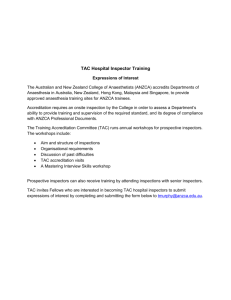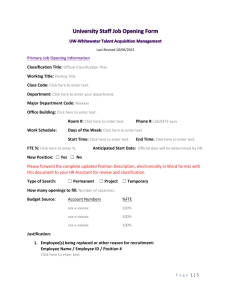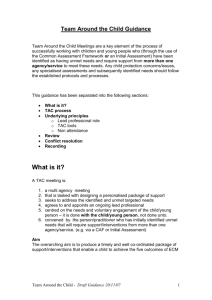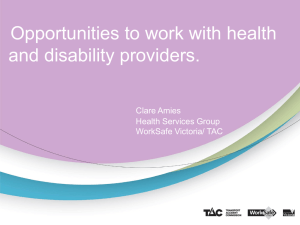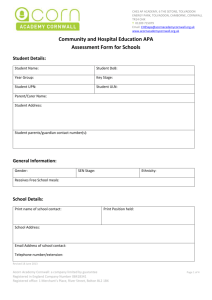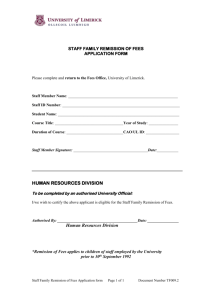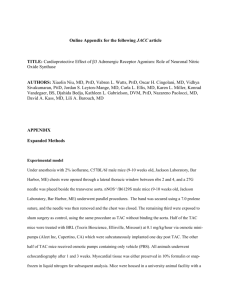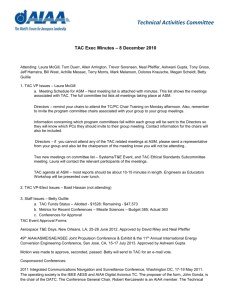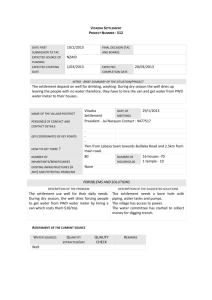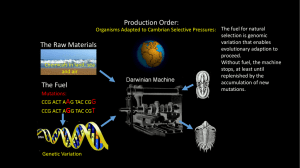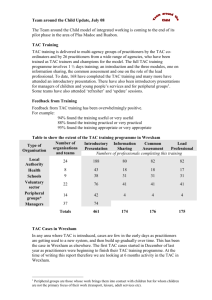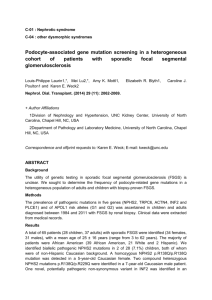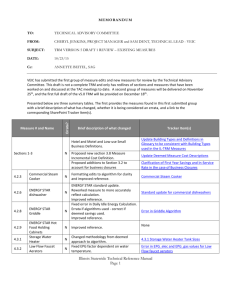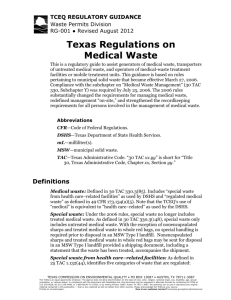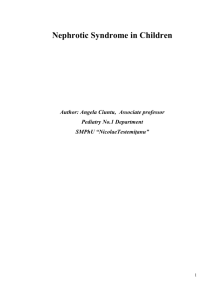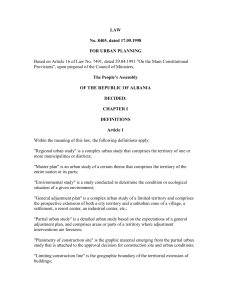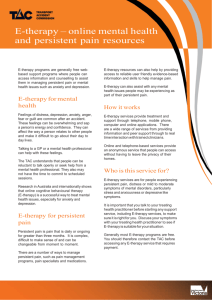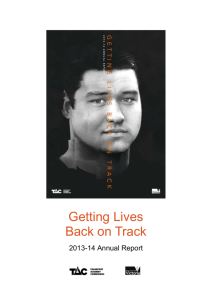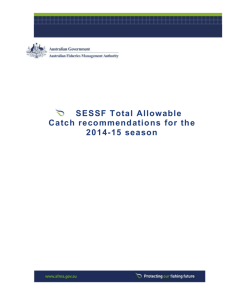Long-term outcome of nephrotic syndrome secondary to primary
advertisement
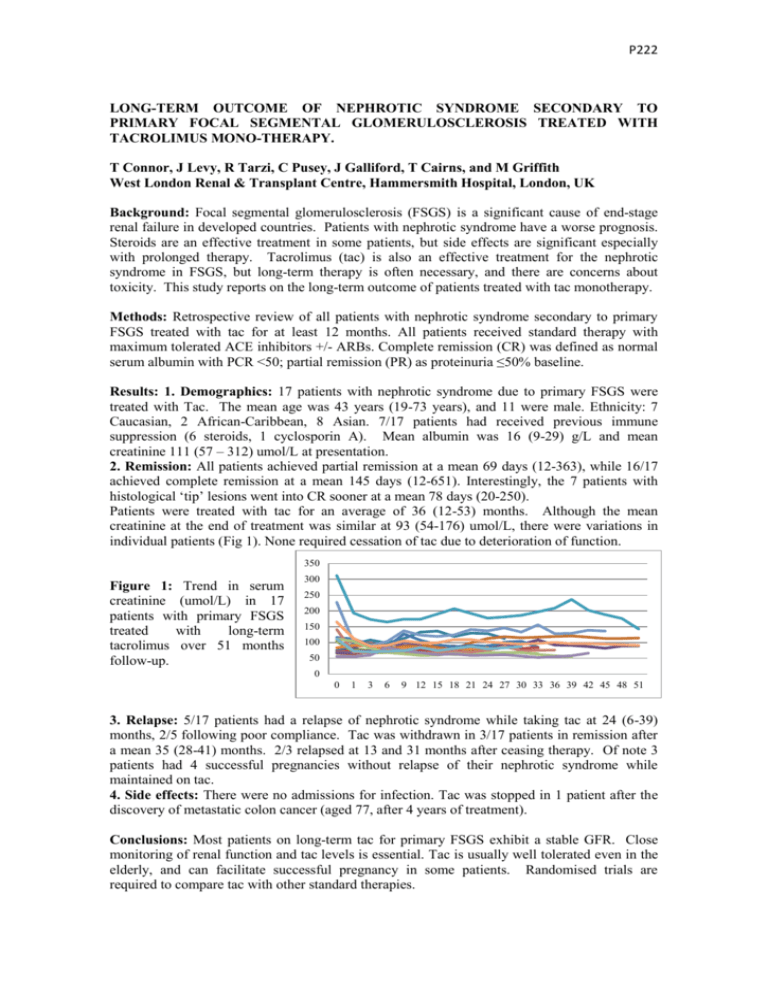
P222 LONG-TERM OUTCOME OF NEPHROTIC SYNDROME SECONDARY TO PRIMARY FOCAL SEGMENTAL GLOMERULOSCLEROSIS TREATED WITH TACROLIMUS MONO-THERAPY. T Connor, J Levy, R Tarzi, C Pusey, J Galliford, T Cairns, and M Griffith West London Renal & Transplant Centre, Hammersmith Hospital, London, UK Background: Focal segmental glomerulosclerosis (FSGS) is a significant cause of end-stage renal failure in developed countries. Patients with nephrotic syndrome have a worse prognosis. Steroids are an effective treatment in some patients, but side effects are significant especially with prolonged therapy. Tacrolimus (tac) is also an effective treatment for the nephrotic syndrome in FSGS, but long-term therapy is often necessary, and there are concerns about toxicity. This study reports on the long-term outcome of patients treated with tac monotherapy. Methods: Retrospective review of all patients with nephrotic syndrome secondary to primary FSGS treated with tac for at least 12 months. All patients received standard therapy with maximum tolerated ACE inhibitors +/- ARBs. Complete remission (CR) was defined as normal serum albumin with PCR <50; partial remission (PR) as proteinuria ≤50% baseline. Results: 1. Demographics: 17 patients with nephrotic syndrome due to primary FSGS were treated with Tac. The mean age was 43 years (19-73 years), and 11 were male. Ethnicity: 7 Caucasian, 2 African-Caribbean, 8 Asian. 7/17 patients had received previous immune suppression (6 steroids, 1 cyclosporin A). Mean albumin was 16 (9-29) g/L and mean creatinine 111 (57 – 312) umol/L at presentation. 2. Remission: All patients achieved partial remission at a mean 69 days (12-363), while 16/17 achieved complete remission at a mean 145 days (12-651). Interestingly, the 7 patients with histological ‘tip’ lesions went into CR sooner at a mean 78 days (20-250). Patients were treated with tac for an average of 36 (12-53) months. Although the mean creatinine at the end of treatment was similar at 93 (54-176) umol/L, there were variations in individual patients (Fig 1). None required cessation of tac due to deterioration of function. 350 Figure 1: Trend in serum creatinine (umol/L) in 17 patients with primary FSGS treated with long-term tacrolimus over 51 months follow-up. 300 250 200 150 100 50 0 0 1 3 6 9 12 15 18 21 24 27 30 33 36 39 42 45 48 51 3. Relapse: 5/17 patients had a relapse of nephrotic syndrome while taking tac at 24 (6-39) months, 2/5 following poor compliance. Tac was withdrawn in 3/17 patients in remission after a mean 35 (28-41) months. 2/3 relapsed at 13 and 31 months after ceasing therapy. Of note 3 patients had 4 successful pregnancies without relapse of their nephrotic syndrome while maintained on tac. 4. Side effects: There were no admissions for infection. Tac was stopped in 1 patient after the discovery of metastatic colon cancer (aged 77, after 4 years of treatment). Conclusions: Most patients on long-term tac for primary FSGS exhibit a stable GFR. Close monitoring of renal function and tac levels is essential. Tac is usually well tolerated even in the elderly, and can facilitate successful pregnancy in some patients. Randomised trials are required to compare tac with other standard therapies.


